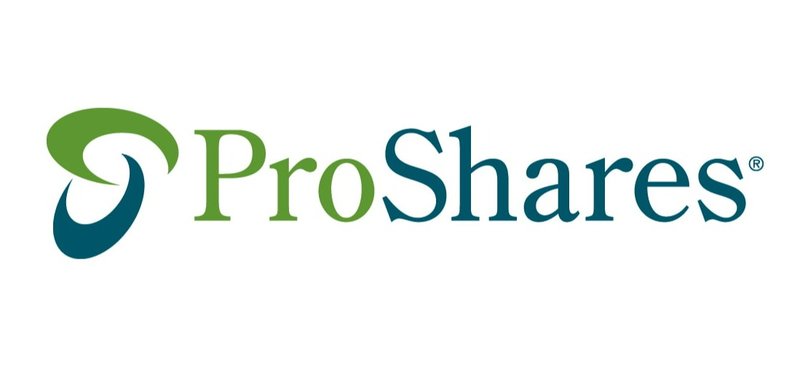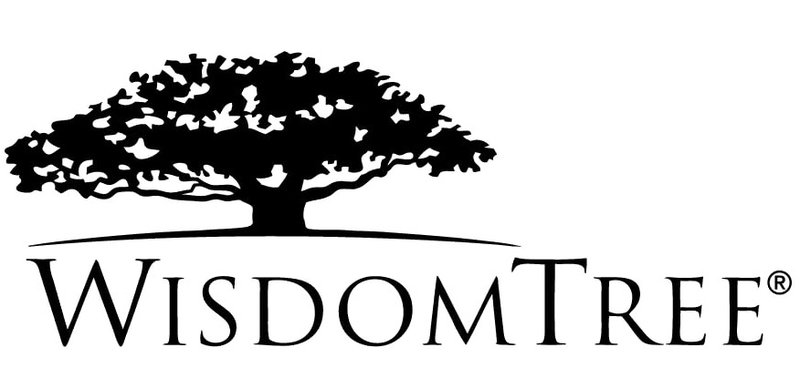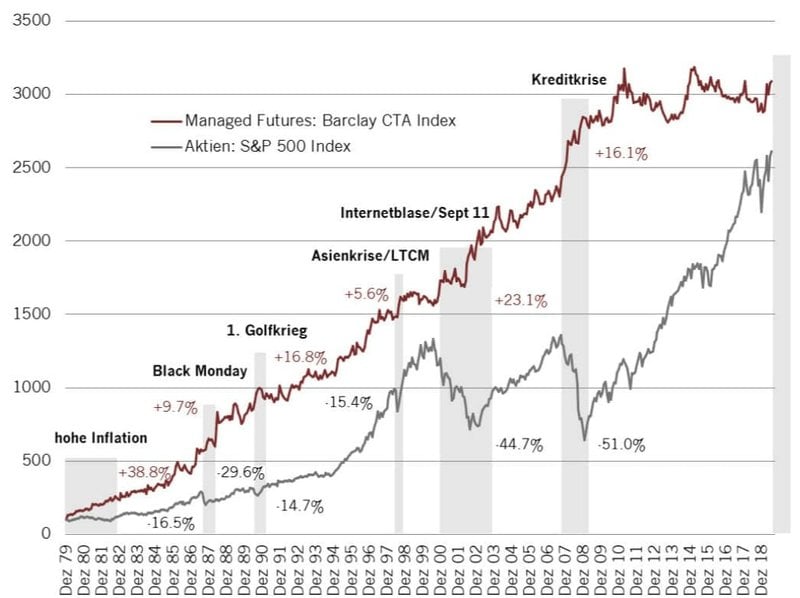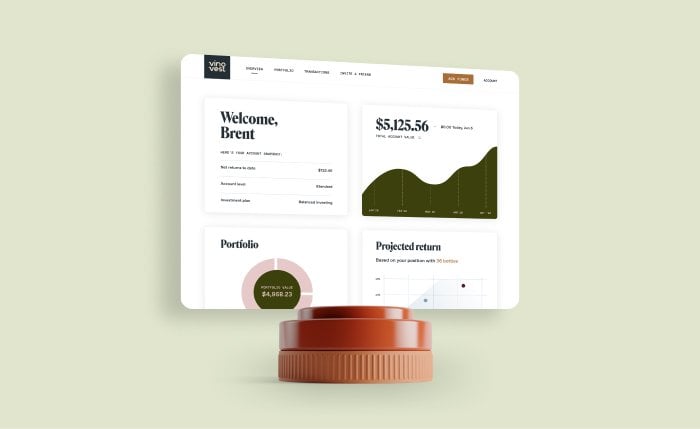Investing in Managed Futures in 2025: Is It Worth It?
Managed futures have a low correlation with volatile, traditional assets like stocks. Plus, they usually offer lucrative returns.
Besides, the managed futures industry has grown rapidly in the last three decades making it a lucrative one to place your bets on.
Let’s discover what managed futures are and how they work, trading strategies and fee structure, the 4 best managed future ETFs to invest in, and if it’s really worth investing in them.
We’ll also check out an excellent alternative investment (fine wine) that offers stable returns.
Further reading
- Here are the 15 Best Alternative Investments worth adding to your portfolio.
- Want tips on how to invest in a profitable asset like fine wine? This Fine Wine Investment Guide is all you need!
What Are Managed Futures, and How Do They Work?

Managed futures are alternative investment options that trade primarily in the futures market.
A managed futures fund (MFF) or managed futures account (MFA) is managed by someone else rather than the account’s owner.
The funds are operated by managed futures managers such as a commodity trading advisor (CTA) or a commodity pool operator (CPO.) These fund managers have to be regulated in the USA by the National Futures Association and the Commodity Futures Trading Commission.
So, what do they invest in?
Managed futures managers usually invest in a portfolio of futures contracts comprising stock index futures, commodity futures, foreign currency futures, and fixed income futures.
In a managed futures program, the amount traded is usually equal to the principal amount provided by the investor.
But, some people might take the notional funding approach. Simply put, notional funding means investing only a portion of the minimum investment required by fund managers.
Are managed futures the same as hedge funds?
Managed futures and hedge fund options differ in terms of the markets in which they’re traded.
Managed futures can be traded only on futures and forward markets. Meanwhile, a hedge fund can be traded over the counter and on various global markets.
Now, let’s explore some trading strategies and fee structures.
Managed Futures Trading Strategies and Fee Structure

Here are the various trading strategies you can use on a managed futures investment:
- Trend Following Strategy: This trading strategy involves buying assets in higher-trending markets and selling short in lower-trending markets.
- Market-Neutral Strategy: Involves making investments that aren’t affected by the stock and bond markets. With this strategy, the portfolio manager makes long and short-term investments simultaneously.
- Discretionary Strategy: It’s an approach where the commodity trading advisor (or any other fund manager) makes an investment decision based on real-time market data.
- Systematic Strategy: Involves making an investment decision based on trends or patterns observed in historical charts.
There are two major fees associated with a managed futures account - the management fee and the performance fee.
- Management Fee: Ranges from 0% to about 3% per year. This fee depends on the program you’re investing in and your fund manager’s experience.
- Performance Fee (Incentive Fee): It’s the amount you pay the fund manager when you make a profit. This fee usually ranges between 20% and 30%.
So, which managed futures options should you invest in?
The 4 Best Managed Futures ETFs to Add to Your Investment Portfolio
Here are the managed futures ETFs that offer lucrative returns:
- ProShares Managed Futures Strategy ETF
- WisdomTree Managed Futures ETF
- First Trust Morningstar Managed Futures Strategy ETF
- KFA Mount Lucas Index Strategy ETF
1. ProShares Managed Futures Strategy ETF

This actively managed fund can help you hedge against fluctuations in the stock market.
How?
It makes it easy for you to go “long” or “short” on a stock.
Going “long” on a stock means you own the stock and will profit if its price rises. Meanwhile, going “short” means you don’t own the stock and can only benefit if its price declines.
The expenses for the ProShares Managed Futures Strategy ETF are $7.50 (0.75%) for every $1,000 you invest.
2. WisdomTree Managed Futures ETF

This fund is one of the largest managed futures ETFs on the market. It’s another brilliant option for hedging against fluctuating movements in the global markets.
The expenses for this ETF are $6.50 (0.65%) for every $1,000 you invest.
3. First Trust Morningstar Managed Futures Strategy ETF

This actively managed futures fund aims to outperform its benchmark index (the Morningstar Diversified Futures Index.) It selects investment options from the benchmark and finds a strategy that can beat the whole index.
The expenses for this ETF are $9.50 (0.95%) for every $1,000 you invest.
4. KFA Mount Lucas Index Strategy ETF

This fund invests in global fixed-income futures contracts and commodity currency.
It uses the KFA MLM Index as the target benchmark. The KFA MLM Index frequently evaluates the trading signals of markets and invests in securities with maturities of up to 12 months.
Now for the big question:
Are Managed Futures a Good Investment?

Managed futures usually display a low correlation to traditional assets and stock indices like the SP 500 index. So, they tend to perform well even during economic downturns.
This asset class can help you reduce your portfolio volatility and risk. They can be great for portfolio diversification as well.
According to the CASAM CISDM CTA Equal Weighted Index, managed futures had an annual average return of 14.52% from 1980 to 2010. Meanwhile, the SP 500 index shows that the stock market returned only 7.04% during the same period.
But here’s the biggest catch:
There might be some expenses and hidden fees you have to pay on managed futures investments. For instance, managed futures funds usually charge a 2% management fee and a performance fee of 20% of net profits. This 20% performance fee is likely to lower your returns significantly.
This poses substantial risk to your investment strategy.
According to US Securities and Exchange Commission, between 2003 and 2012, 89% of the gains made in 63 managed futures funds were spent on fees and other costs. This shows that investors didn’t really get the best return on their investments.
What does this mean for you?
By investing in managed futures, you’re taking the risk of paying huge fees and not making enough profit.
So, what’s a more high-return, reliable alternative?
Fine wine!
Fine Wine: An Excellent Alternative Investment

If you’re serious about reducing your portfolio volatility and risk, you should explore fine wine investment.
Why?
Fine wine usually beats assets such as gold, mutual fund options, and traditional investments like stocks.
Interestingly, fine wine investment yielded 13.6% annualized returns over the past 15 years. And if you invest in a fine wine bottle today, the future results would be a steady annual return of about 15%.
Also, fine wine has proven to be profitable during any economic downturn - be it a stock market crash or during interest rate hike periods. For example, during the COVID pandemic in 2020, wine sales grew by 19.3% in volume and 24.7% in value.
The good news is that fine wine investment has no hidden fees and unexpected expenses - as long as you invest through a trusted wine investment platform.
What’s the easiest way to do this?
Head to the Vinovest website! This AI-powered platform helps you buy, store, and sell the finest wine bottles from anywhere in the world.
Here are some benefits of investing through Vinovest:
- Low Overall Costs: Vinovest charges you a 2.5% annual fee (1.9% for portfolios of $50,000+) which covers wine buying, storage, fraud detection, portfolio management, insurance, and wine selling.
- Easy Buying and Selling: Vinovest helps you easily buy and sell wines anytime. However, it’s best to sell your fine wine when it peaks (usually after 5-20 years.) Our advisors will guide you on the best liquidity options and the best time to sell. They’ll also help you to maximize your returns - no matter the market conditions.
- Best Prices: Vinovest sources wines directly from winemakers, global wine exchanges, and wine merchants at wholesale prices. So, this ensures that you get your wines at a fair market value.
- Authenticity and Provenance: Vinovest traces your wine’s provenance to ensure that you invest only in authentic bottles.
- Optimal Storage and Safety: Your wines are stored under optimal conditions in bonded warehouses.
- Easy Delivery: If you want your wines to be delivered to you, Vinovest will help - regardless of where you are in the world.
Invest in Profitable Options Like Managed Futures and Fine Wine

Investing in a managed futures program can be great for portfolio diversification purposes. However, this asset class usually has tons of additional fees that might affect your returns.
If you want to reduce your portfolio volatility and get the best returns, you should explore profitable assets like fine wine.
The finest wines usually outperform the global equity market, mutual fund options, and other assets. In fact, fine wine can also help you overcome market downturns such as interest rate hikes.
Check out the Vinovest website today to start investing in fine wine bottles. A Vinovest expert will work with you so you can pick the right investment strategy that suits your needs.



